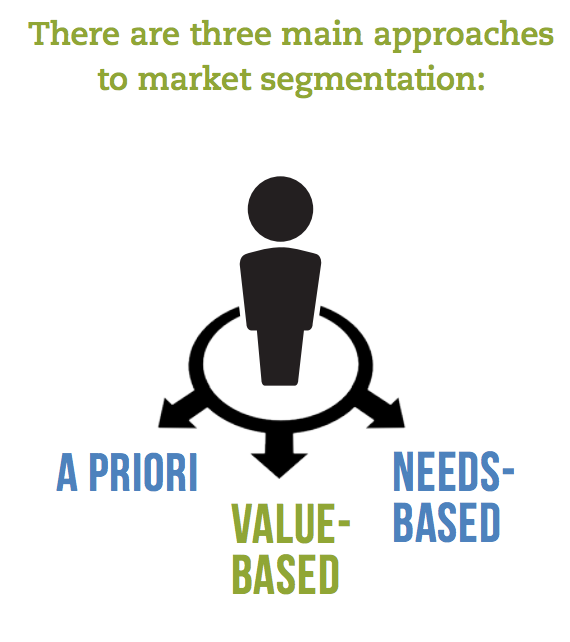It would be a mistake to lump B2B media relations in with general PR practices; simply because it is so unique and layered. B2C PR deals with the everyday consumer whose priorities are probably quite different from the corporate folk that B2B companies are trying to communicate with.
Due to these vast differences, the entire PR strategy for a B2B company should have its own set of goals and priorities. B2B companies are beginning to understand just how important media relations is as 75 percent of businesses plan to up their PR spending in the coming year. However, simply spending more does not always ensure success. In fact, an expensive strategy can be just as ineffective as a cheap one.
As PR expert Ben Veal put it:
“The key to successful B2B PR is accurately identifying an audience and their drivers, and then developing tailored content that is specifically designed to engage and resonate. This content needs to be released at the right time and in the right format to ensure that the decision-makers you are targeting are reached and understand the message.”
Let’s discuss some tips and ideas that can help get your B2B media relations campaign on the right track.
1. Understand Key Decision Makers’ Pain Points
Obviously, a B2B decision maker is going to have different priorities than a B2C shopper would. They are looking for a service or product to help their business succeed, so it must have clear benefits that will affect their bottom line, as well as day-to-day operations. Unlike the average consumer, B2B customers are not necessarily looking for the best deal or the latest technology. They are more interested in the end result.
To create the type of media content that will attract and convert executives, marketers and PR pros must understand what makes them tick and what content influences them the most.
There are some key statistics to keep in mind for this task.
- Roughly two-thirds of the buyer’s journey for B2B decision makers is conducted online. This means that most of the awareness and introduction phase is completed digitally, and customers do not reach out to sales departments directly until far later in the journey.
- 80 percent of B2B buyers prefer to collect information about the product or service through articles and quality content, rather than advertisements. Of course, this online content plays a major role in their purchase decision.
This means that the subject of your content must be highly relevant to your target customers’ pain points and concerns. Nearly half of all consumers check out three to five pieces of content before they reach out to a salesperson, so they must thoroughly answer the most burning questions.
Seeing what your most common customer inquiries are about is a good starting point. These FAQs can guide your PR strategy in the right direction by identifying common patterns.
2. Segment Wisely
In today’s B2B market, customers are as vast and wide as ever. That being said, client segmentation is certainly not a one-size-fits-all entity, as a B2B’s audiences can vary quite a bit. Therefore, B2B media teams must understand their diverse audiences and how to address each segment accurately.
There are essentially three key methods that B2B companies should utilize in order to properly categorize their customers for more relevant marketing and media strategies.
The first category is A priori segmentation, otherwise known as public data segmentation. This means that potential clients are organized by common data, such as company size, location, or industry niche. This type of segmentation is fairly simple and straightforward; however, it should only be a starting point. After all, two companies may be the same size but have totally different priorities and budgets — two factors that could make generic content totally irrelevant to them.
The next type of segmentation is value-based, which involves separating clients into categories based on their expected spending budgets and how well they match your goals. For example, if an industry leader is interested in your product/service and converts, they could be valuable for future sales because it increases your credibility. However, this could mean that smaller businesses and clients get pushed to the wayside because they are viewed as “less valuable” due to their smaller budgets.
The final (and arguably most accurate) form of segmentation is needs-based. This means that potential clients are separated based on their specific product or service requirements. This information can be determined through market research, consumer information, or sales transactions. The goal is to discover trends for each segment and determine client needs based on behavior and preferences.
By segmenting customers properly, media relations teams can better understand how to address their clients with their messaging and play to each segment’s needs and priorities.
3. Use Timely Data
Customer data should be a key part of any B2B business’s media relations strategy, but it is vitally important that this information is as accurate and fresh as possible. While many marketing and PR teams report that they are trying to integrate more data-driven messaging for their customers, 74 percent of their customers are unsatisfied with their content because it is not relevant to their interests.
This is why timely data is absolutely necessary so that messages, promotions, or content pieces are more in-line with your target audience’s needs in the moment. For example, media teams can track past shopping behaviors by gathering consumer data from POS transactions to identify customer profiles. From here, these people can be better targeted for related content to help them make the most of your company’s services.
It’s a fact that customers appreciate personalized content, and 98 percent of marketing experts report that it has some degree of impact on building better customer relationships. However, the only way to sustain a personalization strategy in media relations is by gathering and analyzing data as quickly and as often as possible. Be sure that your team’s data collection methods are in-the-moment and updated regularly for the best results.
4. Create Smooth Buyer’s Journey Transitions
The buyer’s journey for B2C consumers is usually simple, straightforward and fast. Once customers are made aware of the brand or product, they consider their options and make a quick decision.
However, the journey for B2B customers is far lengthier and complicated. After all, the typical shopper does not have thousands — or millions — of dollars in their spending budgets.
Additionally, B2C purchase decisions tend to be a “one and done” type of deal. They consider their options, choose whichever product best fits their ideal situation and buy it. However, the B2B buyer’s journey is far more layered. First of all, there are normally several decision-makers who must come to an agreement, rather than just a single consumer. Moreover, the customer journey usually takes far longer — most purchase decisions are made months after an initial inquiry.
It is up to media relations teams to ensure that each step along the way is as easy and seamless as possible. Any kinks could result in lost revenue. It is necessary for teams to understand the role that their media messages play and focus on building trust and customer confidence to make the transitions smooth.
5. Edit, Edit Some More, and Edit Again
Though the PR world is notoriously fast-paced, this does not give media teams the excuse to skip over the editing process. Simple mistakes like misspellings, unclear verbiage, or unverified information can totally destroy a brand’s credibility and do far more damage than a delayed but correct response would.
Unfortunately, according to Edelman’s Trust Barometer, public confidence in the media is quite low, which means that brands must be extremely careful that every posted message is accurate and truthful. The only way to do this is by checking, editing, changing and editing again in order to ensure that nothing slips through the cracks.
Conclusion
The realm of B2B PR is truly a breed of its own. It has such an immense impact on conversions, brand trust and customer satisfaction, that its importance cannot be understated.
To make sure that your B2B business gets its media relations strategy right, it is important to always keep the customers’ pain points first and foremost. Identify their burning questions and address them through quality content. Be sure to understand which category each client fits into to target them with more relevant messages. Use data collection systems to gather and analyze information relevant to potential customers’ needs. By doing so, the transition from visitor-to-customer-to-advocate can be much smoother.
About Manish Dudharejia
Manish Dudharejia is the President and Co-Founder of E2M Solutions Inc, a San Diego Based Digital Agency that specializes in Website Design & Development and eCommerce SEO. With over 10 years of experience in the Technology and Digital Marketing industry, Manish is passionate about helping online businesses to take their branding to the next level.
from Blogs https://ift.tt/2KqU8vB



outsource ecommerce development
ReplyDeleteecommerce content writers